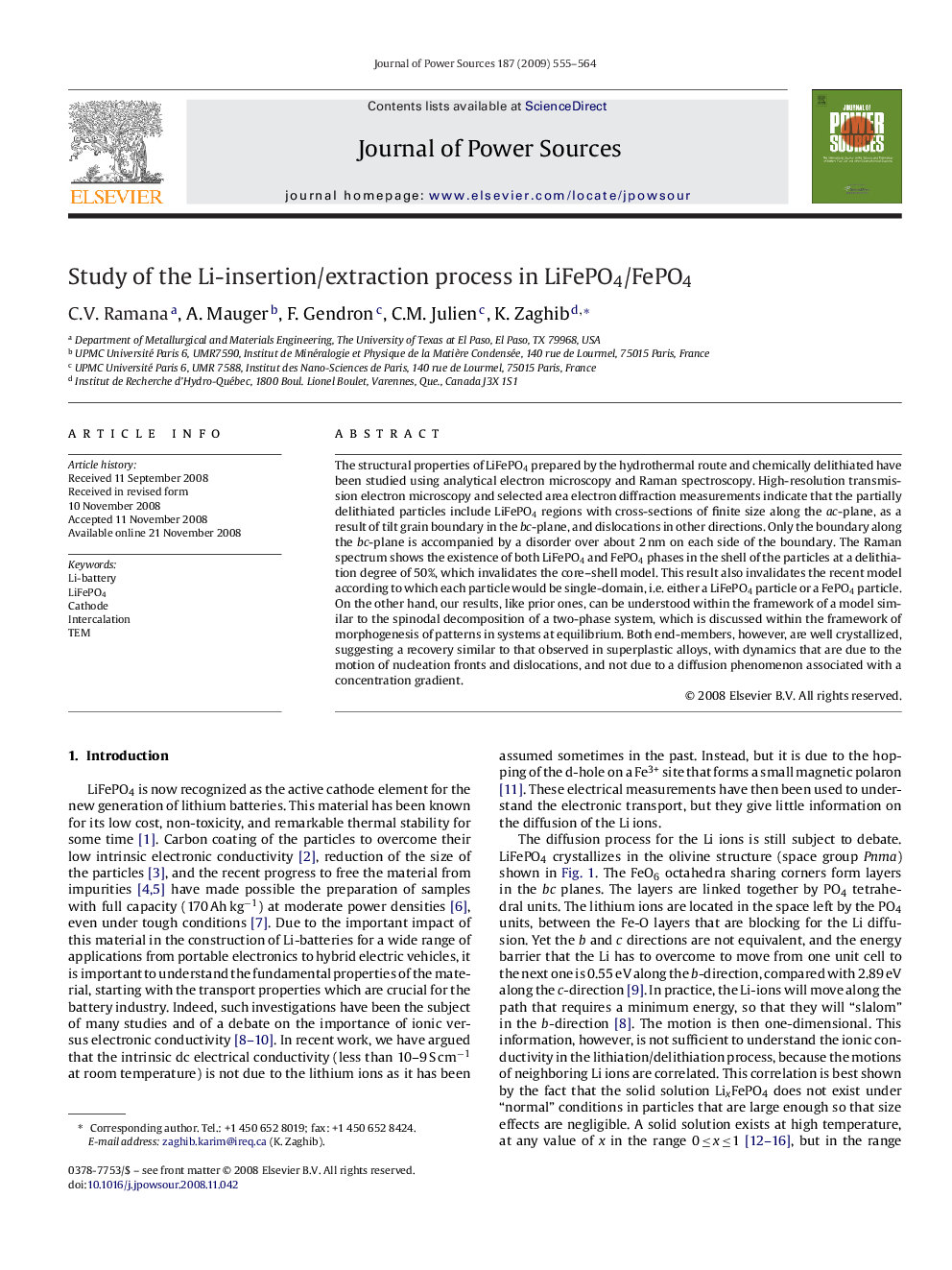| Article ID | Journal | Published Year | Pages | File Type |
|---|---|---|---|---|
| 1285259 | Journal of Power Sources | 2009 | 10 Pages |
The structural properties of LiFePO4 prepared by the hydrothermal route and chemically delithiated have been studied using analytical electron microscopy and Raman spectroscopy. High-resolution transmission electron microscopy and selected area electron diffraction measurements indicate that the partially delithiated particles include LiFePO4 regions with cross-sections of finite size along the ac-plane, as a result of tilt grain boundary in the bc-plane, and dislocations in other directions. Only the boundary along the bc-plane is accompanied by a disorder over about 2 nm on each side of the boundary. The Raman spectrum shows the existence of both LiFePO4 and FePO4 phases in the shell of the particles at a delithiation degree of 50%, which invalidates the core–shell model. This result also invalidates the recent model according to which each particle would be single-domain, i.e. either a LiFePO4 particle or a FePO4 particle. On the other hand, our results, like prior ones, can be understood within the framework of a model similar to the spinodal decomposition of a two-phase system, which is discussed within the framework of morphogenesis of patterns in systems at equilibrium. Both end-members, however, are well crystallized, suggesting a recovery similar to that observed in superplastic alloys, with dynamics that are due to the motion of nucleation fronts and dislocations, and not due to a diffusion phenomenon associated with a concentration gradient.
